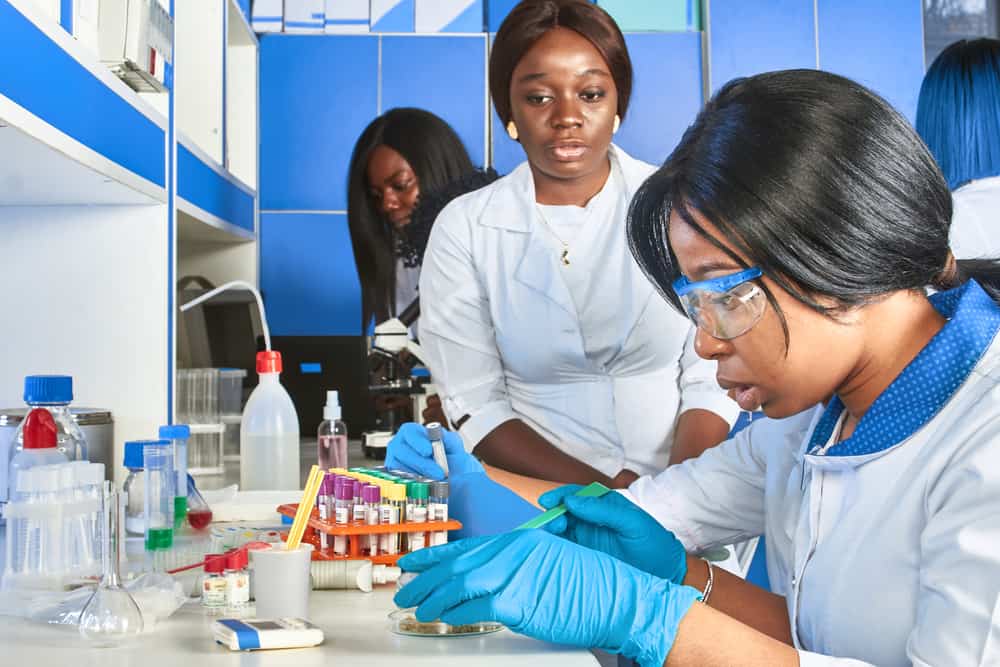September 26, 2022

The crisis within the crisis: antimicrobial resistance and access to antibiotics in Africa
One Health Trust and other partners in the Mapping Antimicrobial Resistance and Antimicrobial Use (MAAP) consortium reviewed 819,584 AMR records collected between 2016 and 2019 from 205 laboratories across 14 African countries. The findings highlight the urgent need to prioritize building the capacity to monitor AMR; of 50,000 laboratories in the networks surveyed, only 1.3% have the capacity for bacteriology testing. The authors refer to this level of testing as “flying blind” regarding understanding the extent of the AMR problem and informing appropriate strategies to address it. Evidence suggests that the irrational use of certain antibiotics is coupled with a lack of access to others; only four drugs comprised more than two-thirds (67%) of all the antibiotics used in healthcare settings [ASLM-MAAP]
Monkeypox outbreak deaths are lower than expected.
The death toll associated with the recent global monkeypox outbreak is lower than expected, at about 0.04%. Although significantly lower than death rates caused by previous monkeypox outbreaks, 0.04% is likely an undercount due to limited testing and surveillance resources in some parts of the world. In the current monkeypox outbreak, clinicians are seeing fewer but more painful lesions due to their appearance in mucosal tissues. Additionally, neurological complications associated with severe disease may indicate that the monkeypox virus has evolved. [Nature]
Rapid detection of resistant Gram-negative bacteria can prevent inappropriate early antibiotic treatment.
Scientists call for faster diagnosis and treatment of antibiotic-resistant Gram-negative bacteria (GNB), particularly those that exhibit difficult-to-treat resistance (DTR) or resistance to all fluoroquinolones and all beta-lactam categories, including carbapenems. Studies have shown that antibiotic resistance mechanisms in GNB have resulted in delayed antibiotic therapy, worse health outcomes, and increased mortality. Scientists emphasize the importance of understanding individuals’ infection risk by DTR-GNB, improving diagnosis and identification of specific resistance mechanisms, and de-escalating an initially broad-spectrum regimen to targeted therapy to reduce the frequency of inappropriate early antibiotic treatment. [JAC- Antimicrobial Resistance]
Expanding and strengthening nurses’ clinical and educational skills is essential in the fight against AMR.
Nurses, highly reliable yet underutilized healthcare team partners, should take a more active role in antimicrobial stewardship. Expansion of the role of nurses in antimicrobial stewardship and beyond clinical care can enable them to educate and communicate with patients to promote a better understanding of antimicrobial resistance. Investment in antimicrobial stewardship nursing research is needed to support and strengthen the value of nurses in relieving the burden of drug-resistant infections. [The Lancet]
Ongoing pediatric health disparities worsened by the COVID-19 pandemic.
While the Sustainable Development Goals (SDG) of 2015 sought to measure global determinants of direct and indirect health in children and adolescents, progress has stalled due largely to COVID-19 resource allocation efforts. Recent estimates of health determinants indicate a reversal of previous gains, including lower vaccination rates, higher rates of stillborn births, worsening poverty, and increased child-related violence. In addition, heavy disease burden disproportionately affects children from low- and middle-income countries. [Pediatric Global Health]
Public health rainbow models as essential tools for disease management.
As public health complexities grow, Nordic rainbow models may simplify and elucidate socioeconomic inequalities of health by identifying which levels of intervention are needed to drive health action programs. While limitations of definition, methodology, and scope exist within the rainbow framework, the relevance of the interplay between psychosocial and lifestyle factors, social and community networks, and general socioeconomic, cultural, and environmental conditions continue to endure in different contexts. As the global understanding of determinants of health continues to change, public health models need to be updated to better address health inequalities. [Scandinavian Journal of Public Health]
Outdoor residual spraying (ORS) is effective for malaria control in Myanmar.
To test the efficacy of ORS in reducing the frequency of outdoor and early biting by malaria-carrying Anopheles mosquitoes, researchers used a single round of ORS (lamda-cyhalothrin capsule suspension). They measured the biting rate in a 10-month cluster-randomized trial of 12 villages in Karen (Kayin) state, Myanmar. Biting rates decreased by 72% in the first three months and 79% in the next three months. Timely and diverse malaria intervention strategies are needed in areas where bed netting and indoor residual spraying are insufficient to assist with malaria control. [PLOS ONE]
Triple Artemisinin-based Combination Therapy (TACT) may prove beneficial in treating multidrug-resistant malaria.
Researchers conducted 68 in-depth interviews and organized 11 focus groups with key stakeholders in Burkina Faso and Nigeria to address critical ethical issues surrounding the deployment of TACT as the first line of treatment against Artemisinin-based Combination Therapy (ACT)-resistant malaria. The discussions revealed that deploying TACT would not impose additional side effects or costs on end-users. However, there was concern about the additional burden imposed on children in areas where ACTs are still fully effective. [PLOS ONE]
Climate change mitigation approaches in need of youth’s creativity.
Climate change affects everyone, especially younger people whose hope for a better future often drives their ambition for empowerment and education. The traditional view of young adults as learners rather than knowledge holders, assenting rather than consenting patients, leads to the exclusion of essential and creative voices in the decision-making for a complex problem. The climate crisis significantly impacts youth’s mental health, especially in marginalized communities facing complex socioeconomic hardships. Intergenerational collaboration, bringing together experiences from the past and creative solutions for the future, may be the only way to move towards inclusive and sustainable solutions. [The Journal of Climate Change and Health]











